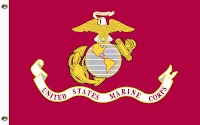Memorial Day is one of the few holidays the federal government sets aside as an official time for everyone to fly the flag.
But flying the flag on Memorial Day is different than flying it on Independence day. This is a memorial holiday so the flag needs to be flown at half-staff – but only for part of the day.
How do you correctly raise a flag to half-staff?
What part of Memorial Day does it fly at half-staff? And then what do you do?
How long does the flag fly at half-staff on Memorial Day? ...
And then what do you do?
The US Flag Code: Position and Manner of Display (section m) says the flag should be flown at half-staff on Memorial Day until noon. After noon, it is then raised to the top until it is taken down:
"The flag, when flown at half-staff, should be first
hoisted to the peak for an instant and then lowered to the half-staff
position. The flag should be again raised to the peak before it is
lowered for the day. On Memorial Day the flag should be displayed at
half-staff until noon only, then raised to the top of the staff" (US Flag Code).
How to fly the flag at half-staff
When the flag flies at half-staff, it needs to be raised and lowered in the same way: Make sure to run the flag up all the way to the top of the pole before
lowering it to
the half-staff position. When you lower the flag for the day, you need
to do the same thing: make sure you run it up to the top before you
completely lower it.
Needless to say, the flag never touches the ground. It is considered a sign of disrespect as the flag is not just a national symbol, but the symbol we carry into battle, the symbol for which many have given their life.
 |
| Memorial flags at the US Capitol. |
The full list of holidays the flag flies at half-staff:
• Memorial Day
• Pearl Harbor Remembrance Day
• on the day
of and the day after the death of a United States senator, representative,
territorial delegate, or the resident commissioner from the Commonwealth of
Puerto Rico
• on the
death of a state's governor (from the day
of death until interment)
• on the death of a governor of a territory or possession (from the day
of death until interment)
• on days the President has indicated at his/ her discretion to mark the death of other officials, foreign dignitaries, or after
other tragic events.
USFlagstore follows the flag guidelines from the US Flag Code.
USFlagstore American flags are made with U.S. labor and from U.S. materials. We can guarantee it.
For complete instructions for displaying and caring the flag, see our blog page, Flag Etiquette 101.
Let it fly!











